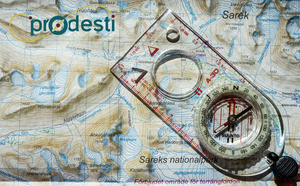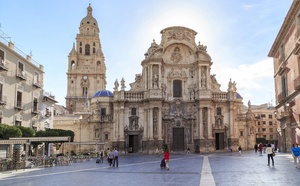Discovered by a team of Spanish archaeologists, the sarcophagus and its lively colors was in good condition.
The Egyptian Home Secretary Mohamed Ibrahim underlined that it was about a very rare discovery.
The sarcophagus was found on an ancient funeral site on the western bank of Luxor, near a grave belonging to the manager of the warehouse of Queen Hatshepsout, of the XVIIIth dynasty which reigned over Egypt from 1502 to 1482 BC.
According to the Director of the Pharaonic department to the ministry, Ali el-Asfar, this sarcophagus dating of the XVIIth dynasty (1 600 years BC) could belong to an important statesman.
Nevertheless, it is necessary to wait for additional analysis to confirm this theory. The sarcophagus wears hieroglyphic inscriptions to facilitate the journey towards the afterlife, according to the Pharaonic beliefs.
The drawings of feathers symbolize Maât, the Egyptian goddess of order, justice and peace, who weighed the hearts of the dead against a feather to determine their status in the afterlife.
The Spanish team, which has been working in Luxor for 13 years, discovered last year the wooden sarcophagus of a five-year-old boy dating the XVIIth dynasty (1 600 years BC).
This new discovery shows to what extent the archaeological wealth of this country is inexhaustible.
Informations Egypt Tourism Board : www.egypt.travel/
The Egyptian Home Secretary Mohamed Ibrahim underlined that it was about a very rare discovery.
The sarcophagus was found on an ancient funeral site on the western bank of Luxor, near a grave belonging to the manager of the warehouse of Queen Hatshepsout, of the XVIIIth dynasty which reigned over Egypt from 1502 to 1482 BC.
According to the Director of the Pharaonic department to the ministry, Ali el-Asfar, this sarcophagus dating of the XVIIth dynasty (1 600 years BC) could belong to an important statesman.
Nevertheless, it is necessary to wait for additional analysis to confirm this theory. The sarcophagus wears hieroglyphic inscriptions to facilitate the journey towards the afterlife, according to the Pharaonic beliefs.
The drawings of feathers symbolize Maât, the Egyptian goddess of order, justice and peace, who weighed the hearts of the dead against a feather to determine their status in the afterlife.
The Spanish team, which has been working in Luxor for 13 years, discovered last year the wooden sarcophagus of a five-year-old boy dating the XVIIth dynasty (1 600 years BC).
This new discovery shows to what extent the archaeological wealth of this country is inexhaustible.
Informations Egypt Tourism Board : www.egypt.travel/


























![Tourisme : où sont passés les Chinois ? [ABO] Tourisme : où sont passés les Chinois ? [ABO]](https://www.tourmag.com/photo/art/large_16_9/87929923-62307593.jpg?v=1744721842)















